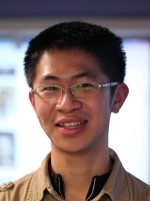
Optical Imaging and Manipulation of Neural Activity
Weijian Yang
Dept. of Electrical and Computer Engineering
University of California, Davis, CA 95616
email: wejyang@ucdavis.edu
时间: 12月19日(星期三)下午15:00-16:30
地点: 玉泉教三440
Abstract
One challenge of understanding how the brain works is the complexity of neural circuits. Most neural circuits are composed of hundreds of thousands of neurons that are interconnected in a highly distributed fashion. Optical methods provide a route to record and manipulate the neural activity with cellular resolution over a large population. The desire to access a larger volume with higher spatial and temporal resolutions is a driving force in the advancement of optical microscopy.
In this talk, I will discuss novel three-dimensional (3D) imaging and optical manipulation modalities using two-photon microscopy with beam multiplexing strategy and wavefront coding technique. By incorporating a spatial light modulator into the microscope, multiple layers of the mouse cortex can be simultaneously imaged with a single photomultiplier tube. An advanced computational source extraction algorithm is developed to demix the signals. A similar principle is used for optogenetics manipulation where a 3D holographic excitation patterns is projected on the mouse cortex for targeted photostimulation. This all-optical imaging and manipulation approach achieves simultaneous high-throughput reading and writing of cortical activity in 3D. Using these tools, I will present intriguing findings in mice cortex which points a promising way to reprogram the neural circuits.
Biography
Weijian Yang is an assistant professor in Electrical and Computer Engineering at University of California, Davis. He received his B.S. degree from Peking University, China in 2008, and his Ph.D. degree from University of California, Berkeley in 2013, both in Electrical Engineering. From 2014 to 2017, he was a postdoctoral researcher at the Department of Biological Sciences at Columbia University. His research interests lie at the intersection of electrical engineering, biomedical engineering and neuroscience. Specifically, he is interested in optical microscopy, biophotonics, integrated optics and optoelectronics, neuroengineering and neural circuitry. He is a recipient of the Career Awards at the Scientific Interface from Burroughs Wellcome Fund in 2016.
